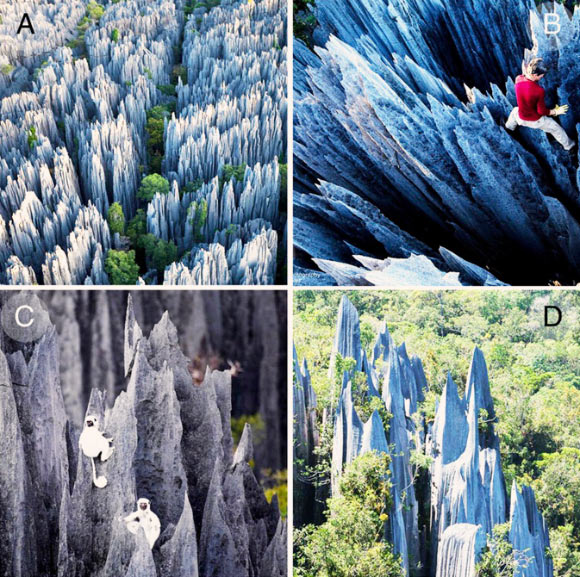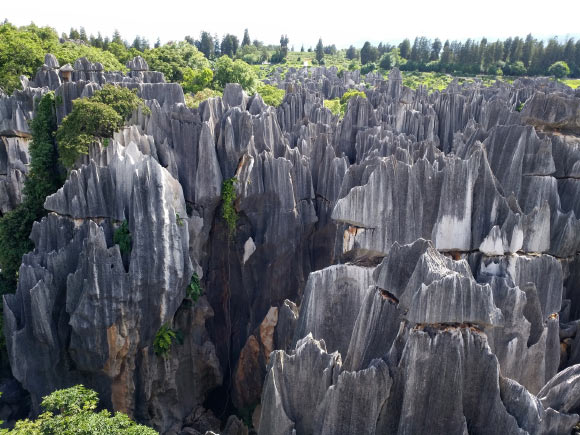A new study, published in the Proceedings of the National Academy of Sciences, reveals a mechanism that may contribute to the formation of sharply pointed rock spires in striking landforms called stone forests.
Stone forests are pointed rock formations resembling trees that populate regions of China, Madagascar, and many other locations worldwide.
They are as majestic as they are mysterious, created by uncertain forces that give them their shape.
“Our work reveals a mechanism that explains how these sharply pointed rock spires, a source of wonder for centuries, come to be,” said senior author Dr. Leif Ristroph, a researcher in the Courant Institute of Mathematical Sciences at New York University.
“Through a series of simulations and experiments, we show how flowing water carves ultra-sharp spikes in landforms.”
The study also illuminates a mechanism that explains the prevalence of sharply pointed rock spires in karst, a topography formed by the dissolution of rocks, such as limestone.
The authors simulated the formation of these pinnacles over time through a mathematical model and computer simulations that took into account how dissolving produces flows and how these flows also affect dissolving and thus reshaping of a formation.

Natural pinnacles and stone forests: (A-C) photographs showing limestone structures of different scales in the Tsingy de Bemaraha National Park in Madagascar; (D) similar limestone formations in the Gunung Mulu National Park in Malaysia. Image credit: Stephen Alvarez / Grant Dixon.
To confirm the validity of their simulations, they conducted a series of experiments in the lab.
They replicated the formation of these natural structures by creating sugar-based pinnacles, mimicking soluble rocks that compose karst and similar topographies, and submerging them in tanks of water.
Interestingly, no flows had to be imposed, since the dissolving process itself created the flow patterns needed to carve spikes.
The experimental results reflected those of the simulations, thereby supporting the accuracy of the team’s model.
“These same events happen — albeit far more slowly — when minerals are submerged under water, which later recedes to reveal stone pinnacles and stone forests,” the scientists said.
_____
Jinzi Mac Huang et al. Ultra-sharp pinnacles sculpted by natural convective dissolution. PNAS, published online September 8, 2020; doi: 10.1073/pnas.2001524117








